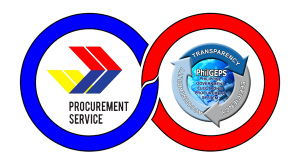Efficiency in procurement is essential for organizations aiming to stay competitive. One way to simplify the process is through a well-structured product catalog. For both buyers and suppliers, a detailed and organized catalog can eliminate unnecessary delays, reduce errors, and create a smoother purchasing experience. In the Philippines, where procurement can be slowed down by manual processes and inconsistent supplier offerings, having a reliable product catalog can make a significant difference.

What is a Product Catalog?
A product catalog is essentially a list of products and services that a supplier offers, complete with descriptions, specifications, prices, and availability. It can come in different formats, such as printed booklets, spreadsheets, or, most commonly, digital catalogs. Online catalogs, often integrated with procurement systems, allow businesses to access up-to-date information quickly, making them a more efficient option for modern organizations.
How a Product Catalog Speeds Up Procurement
1. Faster and More Informed Purchasing Decisions
One of the biggest time-consuming tasks in procurement is finding the right product at the right price. A well-structured catalog eliminates guesswork by providing all the necessary information upfront. Procurement managers can compare options quickly, verify specifications, and make informed decisions without having to request multiple quotes from different suppliers.
2. Smoother Ordering Process
Placing orders manually can be tedious, especially when it involves back-and-forth communication with suppliers. A product catalog simplifies this by allowing buyers to select items directly from a predefined list. This not only speeds up transactions but also minimizes errors, ensuring that the right products are ordered every time.
3. Fewer Mistakes in Procurement
Errors in procurement, such as incorrect orders or pricing discrepancies, can lead to delays and extra costs. A standardized catalog ensures that all details are accurate and consistent, helping procurement teams avoid costly mistakes.
Advantages for Suppliers
1. Easier Quotation and Sales Process
Instead of responding to multiple inquiries and providing price lists repeatedly, suppliers can simply refer buyers to their catalog. This saves time for both parties and creates a more transparent purchasing process, as buyers can see product details and prices without the need for back-and-forth negotiations.
2. Better Inventory Control
A structured catalog also helps suppliers keep track of their stock. When integrated with an inventory system, suppliers can update availability in real time, reducing the chances of overselling or supply shortages that could disrupt deliveries.
3. Expanded Market Reach
Suppliers with well-maintained digital catalogs can attract more business. Buyers are more likely to purchase from a supplier that provides an organized and easily accessible product list, especially as more businesses in the Philippines adopt digital procurement platforms.
The Role of Digital Product Catalogs in E-Procurement
1. Seamless Integration with Procurement Systems
Many procurement platforms now support digital product catalogs, making it easier for businesses to manage purchases. Buyers can search for products, compare prices, and place orders without leaving the procurement system, streamlining the entire workflow.
2. Real-Time Pricing and Availability Updates
Unlike printed or static catalogs that can quickly become outdated, digital catalogs allow suppliers to update pricing and stock levels in real time. This ensures that buyers always have the latest information when making purchasing decisions.
3. Data-Driven Procurement Strategies
With access to purchasing data from digital catalogs, procurement teams can analyze spending trends, identify frequently ordered items, and find opportunities to cut costs. This data-driven approach helps businesses make smarter procurement choices.
Steps to Implement a Product Catalog for B2B Procurement in the Philippines
For companies looking to incorporate product catalogs into their procurement process, these steps can help:
- Move from Manual to Digital – If suppliers are still using paper-based catalogs or spreadsheets, shifting to an online platform can significantly improve efficiency.
- Ensure Consistent Product Information – Product descriptions, prices, and specifications should be standardized to avoid confusion.
- Integrate with Procurement Systems – Choosing digital procurement solutions that allow for catalog integration will streamline ordering and tracking.
- Keep the Catalog Updated – Regularly review and update product details, prices, and availability to maintain accuracy.
- Train Procurement Teams – Educating employees on how to use the product catalog effectively will ensure smoother transactions.
Takeaway…
A product catalog is an essential tool that helps both buyers and suppliers simplify procurement. By reducing the time spent searching for products, making the ordering process more efficient, and ensuring pricing accuracy, a well-maintained catalog leads to a smoother procurement experience.
For businesses in the Philippines, adopting digital product catalogs can improve overall operations, making purchasing decisions faster and more cost-effective. As more organizations move toward digital procurement, having a well-organized product catalog will be a key factor in staying competitive in the B2B space.









